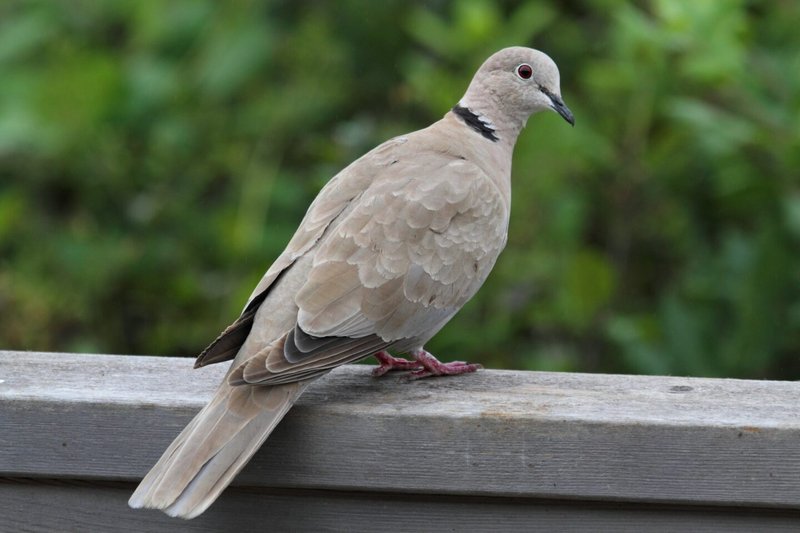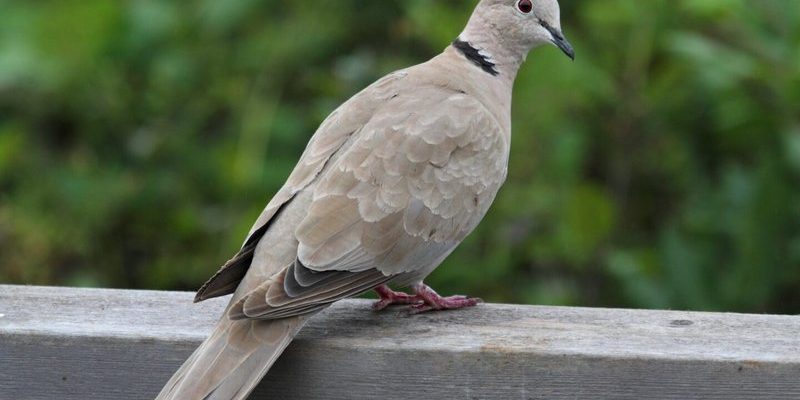
You might think of the Eurasian collared dove as the ultimate survivor, kind of like that tough friend who navigates life’s ups and downs with ease. However, the reality of conservation status can be less straightforward. Just like people, some birds face challenges that can impact their survival. By looking at their population trends, habitats, and threats, we can better understand whether the Eurasian collared dove is threatened or, perhaps, more stable than we assume.
Understanding the Eurasian Collared Dove
The Eurasian collared dove (*Streptopelia decaocto*) is a medium-sized dove that originally hails from the warmer climates of Europe and Asia. You’ll often spot it in urban areas, parks, and gardens, cooing melodiously. One reason these birds have flourished is their adaptability; they can thrive in a variety of environments.
These doves are typically about 12–14 inches long and have a wingspan of around 18 inches. Their soft, gray feathers and the unique black crescent “collar” make them easily recognizable. What’s really interesting is how they’ve expanded their range. Since the late 20th century, they’ve been spotted in North America, where they quickly became a common sight.
You might be wondering how these birds survive. They mainly feed on seeds, grains, and fruits, making them relatively easy to feed and support in both rural and urban settings. This dietary preference has contributed to their ongoing population growth in many regions.
Current Population Status
So, what’s the actual population status of the Eurasian collared dove? Fortunately, the outlook is more positive than for many other bird species. According to various conservation groups, this bird is not currently considered threatened or endangered. In fact, they have expanded rapidly since they first appeared in North America in the 1980s.
In many regions, their populations are robust and stable. However, the story isn’t entirely rosy. While these doves are not at risk of extinction, localized declines can happen due to various factors, including habitat loss and competition with native species. It’s crucial to keep an eye on population trends, as changes can indicate broader environmental issues.
You might be surprised to learn that the Eurasian collared dove has a remarkable ability to reproduce. A single pair can produce multiple broods in a year, leading to significant population increases in suitable habitats. This adaptability is a major reason why they’ve managed to thrive in urban environments.
Habitat and Distribution
The Eurasian collared dove has quite an eclectic taste when it comes to habitats. They can be found in diverse environments, from cities to open farmland. This flexibility has played a significant role in their expansion. In urban areas, parks and gardens provide ample food sources and nesting spots, making them a familiar sight.
Their distribution has grown massively over the last few decades. They’ve moved well beyond their original range, which was primarily in Europe and Asia, South into Africa and even as far as North America. You could say they’ve found a way to “make themselves at home” almost anywhere.
However, habitat loss still poses a potential risk. Urban development, agricultural expansion, and deforestation can reduce suitable nesting and feeding areas. Though their overall population remains stable, localized declines can occur if their habitats are compromised. Understanding where they thrive can help us protect their future.
Threats to the Eurasian Collared Dove
Even though the Eurasian collared dove isn’t classified as threatened, it does face some threats. Habitat loss is one of the primary concerns. As cities expand and farmland is converted for other uses, these birds can lose their nesting and feeding grounds.
Moreover, the impact of climate change cannot be overlooked. Changes in weather patterns can affect food availability and nesting conditions. For instance, extreme temperatures or unpredictable weather can create stressful conditions for birds and their young.
You might also consider the influence of predation. As human development expands, domestic cats and other predators can threaten dove populations, especially in urban settings. While these factors don’t currently endanger the species overall, they highlight the importance of monitoring and conservation efforts.
Conservation Efforts
Conservation efforts for the Eurasian collared dove are crucial, even if they’re not considered endangered. Many local and global initiatives focus on preserving habitats and promoting biodiversity. This often involves creating green spaces within urban areas that can support various species, including doves.
Education is another vital component. Raising awareness about how human actions impact bird populations is essential. Encouraging sustainable practices, such as planting native gardens or providing food sources for birds, can help support local wildlife, including the Eurasian collared dove.
Additionally, research plays a critical role in understanding their population dynamics. Monitoring their habitats and breeding patterns helps conservationists stay ahead of potential threats. By keeping tabs on their status, we can ensure a healthier future for these charming birds.
Comparing the Eurasian Collared Dove with Other Dove Species
When you think about the Eurasian collared dove, it’s worth comparing it with other dove species. Many doves are facing serious threats, making the collared dove’s situation somewhat unique. For example, the Mourning Dove, another North American species, is also common but faces habitat challenges.
In contrast, some native doves, such as the Passenger Pigeon, have faced extinction due to overhunting and habitat loss. Looking at these comparisons helps us appreciate the Eurasian collared dove’s success story. While it thrives, there’s a lesson in understanding what’s at stake for less fortunate birds.
You might be surprised to learn that not all dove species share the same adaptability. While the collared dove has easily adjusted to urban life, others struggle to cope with rapid changes in their environments. Recognizing these differences highlights the importance of promoting diverse habitats for all bird species.
In conclusion, the Eurasian collared dove is currently not categorized as threatened or endangered, which is good news! These birds have adapted well to various environments and have successfully expanded their range. However, ongoing attention to habitat preservation and potential threats is essential for ensuring their continued success.
As we’ve explored, even sturdy species like the Eurasian collared dove can face challenges. By supporting conservation efforts and maintaining awareness, we can contribute to a healthier ecosystem for all wildlife. So, the next time you hear that familiar cooing sound, take a moment to appreciate the journey of the Eurasian collared dove. After all, its story is one of adaptability and resilience, reminding us of the beauty of nature and the importance of protecting it.

